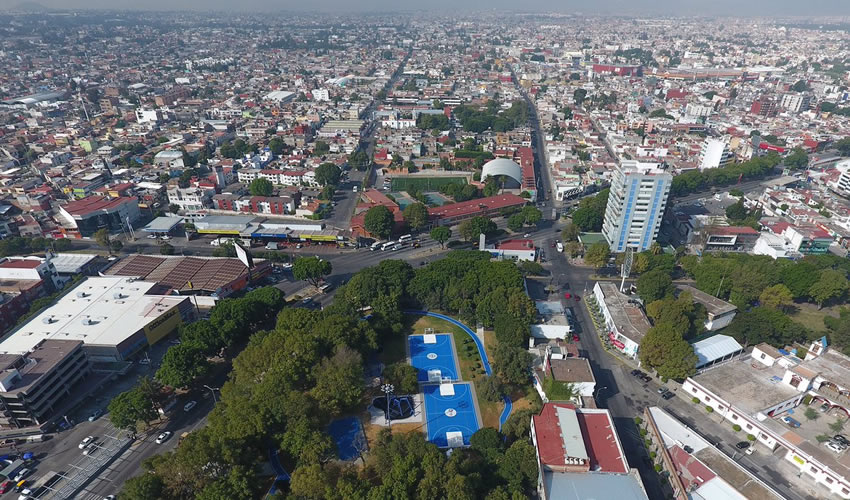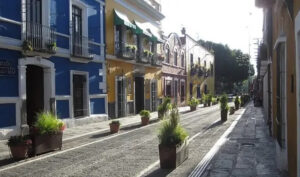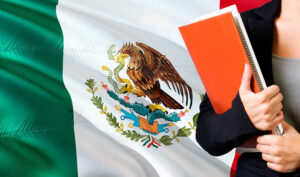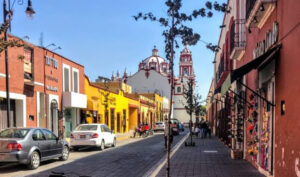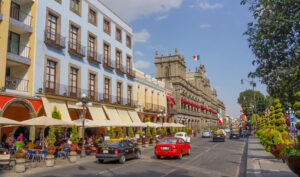Pre-Columbian era
Some historians consider that the area where Puebla City is located nowadays was not inhabited in the Pre-Columbian era, except in the 15th century, when this valley was set aside for use for the so-called Flower Wars among the populations of Itzocan, Tepeaca, Huejotzingo, Texmelucan, and Tlaxcala, with those soldiers captured being used as sacrifice victims.
The foundation of Puebla begins with a letter from the bishop of Tlaxcala in 1530, Julián Garcés, to the Spanish queen outlining the need for a Spanish settlement between Mexico City and the port of Veracruz.
Colonial-era
The city was founded in 1531 in the Valley of Cuetlaxcoapan as a Spanish city, not on the foundation of an existing indigenous city-state. The official date of the foundation is 16 April 1531, however, this first attempt at settlement failed due to constant flooding of the site right next to the river.
Several rivers flow through the Valley of Puebla, the San Francisco, Atoyac, and the Alseseca. This valley was bordered by the indigenous city-states turned colonial towns of Cholula, Tlaxcala, Huejotzingo, and Tepeaca, all of which had large indigenous populations.
After the city’s foundation, this valley became the main route between Mexico City and Veracruz, the port on the Caribbean coast and the connection to Spain.
Puebla was an important city and region in the history of New Spain, since it was in the center region of Spanish settlement, midway between the main port and the capital, had a large indigenous population, and drew many Spanish settlers.
It supplied the capital with commercially grown agricultural products and became a center of local textile production. It was well connected to Mexico’s North, particularly the silver-mining region around Zacatecas.
Most of the population moved away from the west bank of the San Francisco River to a higher site. A few families remained behind and renamed the original settlement Alto de San Francisco.
The Spanish Crown supported the founding of Puebla as a city without encomiendas, as this system was being abused and a number of Spaniards were finding themselves landless.
- Puebla received its coat-of-arms in 1538.
- In 1558 the city received the title “Noble y Leal” (“Noble and Loyal”).
- In 1561 Puebla received the updated title of the “Muy Noble y Leal Ciudad” (“Very Noble and Loyal City”).
- And in 1576 the city received another title “Muy Noble y Muy Leal Ciudad” (“Very Noble and Very Loyal City”).
The layout of the city is of classic Spanish design, centered on the main plaza, today called the Zócalo. This main plaza originally was rectangular, but later made square because the earlier version was considered to be ugly.
Another major feature of the city was the weekly markets (tianguis), in which indigenous sellers would come with their wares and foodstuffs to sell to the population.
By the mid-16th century, water was brought into the main plaza to a newly installed fountain. By the end of the century, the city occupied 120 blocks, much of which was under construction, with the new Cathedral begun in 1575.
Its favorable climate and strategic location helped Puebla to prosper, quickly becoming the second most important city in New Spain.
The city council of Puebla was made up of only Spaniards, had a certain amount of autonomy in the politics of the city and the land under its jurisdiction. This council annexed the towns of Amozoc, Totimehuacán, and Cuautinchán to its territory in 1755.
By 1786, Puebla’s lands reached from what is now Veracruz to Guerrero states. The city continued to grow and be more regulated during the 17th and 18th centuries. A new city hall was built in 1714 and the tianguis in the main plaza was replaced by wood stalls by the 1770s. The streets were paved with stone between 1786 and 1811.
Commercial activity was dislodged from the main plaza completely by the early 19th century and placed in the San Francisco Parian market. Other plazas, such as the San Luis, San Antonio, El Carmen, La Concordia and Santa Inés were built.
The main plaza underwent several transformations, adding statues and gardens. During the Mexican War of Independence, Puebla’s main role was the printing and distribution of the plan for independence. In 1827, after Independence, all Spaniards were expelled from the city’s lands.
Early Republican era
In 1847, the city was taken by U.S. forces under General Winfield Scott, without a shot fired. The American garrison was besieged in the city from 14 September – 12 October 1847 by the irregular forces of General Joaquín Rea and later reinforced by Antonio López de Santa Anna.
The siege was broken by the force of General Joseph Lane that fought its way from Veracruz into the city after defeating Santa Ana in the Battle of Huamantla on 9 October 1847. Puebla was then the base for General Lane’s campaign against General Rea and the other guerrillas that harassed the U. S. Army line of communications. These forces left in July 1848 after the Treaty of Guadalupe Hidalgo was ratified.
During the French intervention in Mexico on 5 May 1862 in the Battle of Puebla, defending Mexican forces under Ignacio Zaragoza defeated the French army under Count de Lorencez.
The city’s name was changed to Puebla de Zaragoza in 1862, by a decree issued by Benito Juárez, and the holiday “5 de Mayo” (“Cinco de Mayo”) is a major annual event here.
The city was attacked again by the French in 1863, who succeeded in taking it. French forces left in 1866 and reconstruction began in 1867.
During the end of the 19th and beginning of the 20th century, Puebla remained important culturally and economically. It had a thriving textile industry at this time. Immigration from Europe was encouraged and people from Spain, Italy, Germany, France, and Lebanon came to live in the city.
In what became a precursor to the Mexican Revolution, siblings Carmen, Máximo y Aquiles Serdán was behind one of the first conspiracies against the Porfirio Diaz government. Their plans were discovered and their house, located on 6 Oriente street was surrounded by federal troops.
A gun battle ensued, killing both Serdán brothers on 18 November 1910. During the Mexican Revolution, the city was taken by forces under General Pablo Gonzalez Garza, then later was under Zapatista control.
Recent events
From 1931 until the end of the 20th century, growth of the city spurred the absorption of the municipalities of Ignacio Mariscal, San Felipe Hueyotlipan, Resurreccion, San Jeronimo Caleras, San Miguel Canoa and San Francisco Totimehuacán into the city.
In 1950, by decree of the state congress, the city received the title of Heroica Puebla de Zaragoza. In 1977, the federal government declared the city a Zone of Historical Monuments. In 1987, the historic center of Puebla has declared a World Heritage Site by UNESCO.
The City of Puebla submitted its candidacy to hold the headquarters of the Free Trade Area of the Americas and briefly served as interim secretariat headquarters until negotiations were stopped in 2005.

